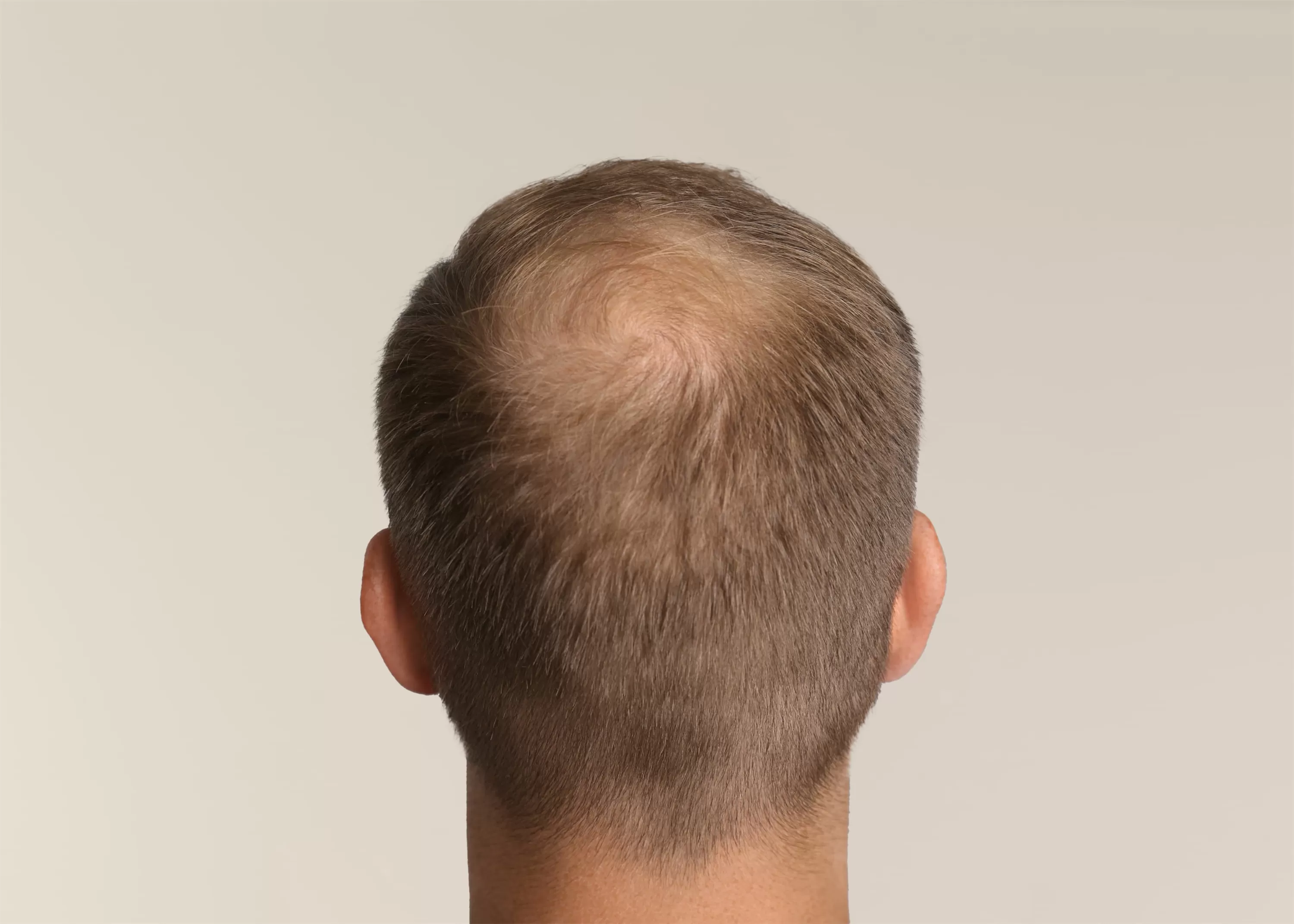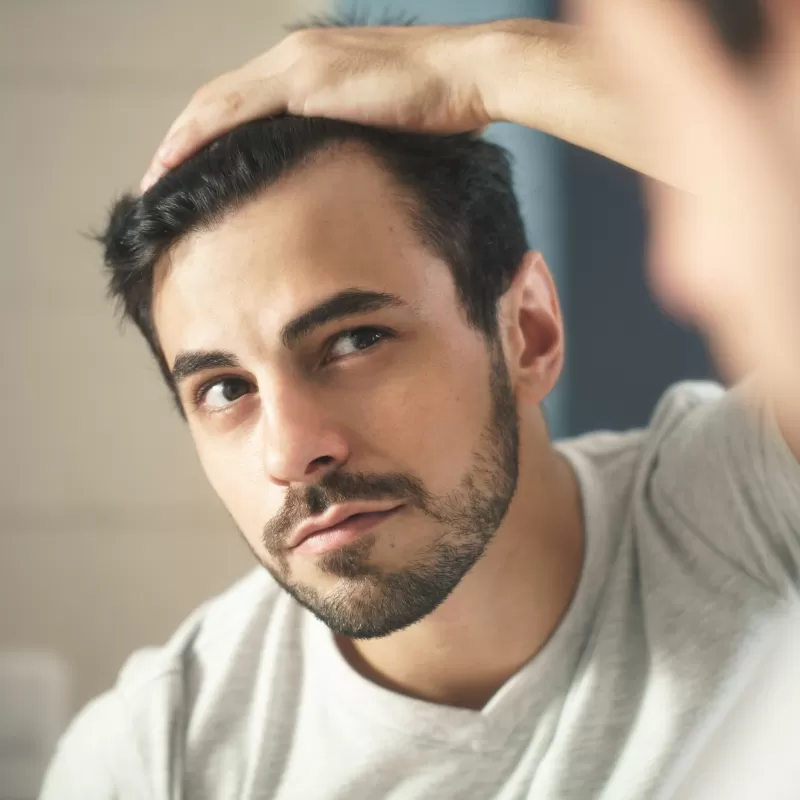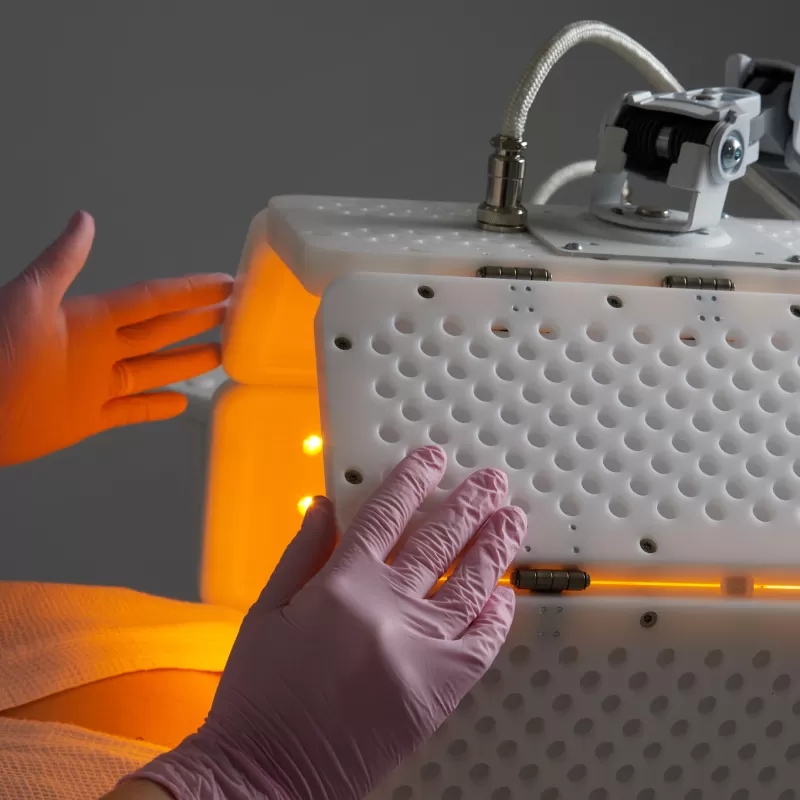Book a consultation with our hair loss doctor to discuss male pattern hair loss & view our industry range of hair loss solutions.
Male Pattern Hair Loss
Male Pattern Hair Loss
Condition
What is male pattern hair loss?
What is male pattern hair loss?
Male pattern baldness, also known as androgenic alopecia, affects over half of all men aged over 50. It is one of the most common reasons why people choose to have a hair transplant.
Male pattern baldness is an inherited trait that can give men a thinning crown and receding hairline. The most common patterns of male pattern baldness are:
- Hair thinning at the top of the head and the temple area, which can eventually form a ‘horseshoe’ of remaining hair
- Hair receding from the hairline’s front, gradually pushing the hairline back
What causes male pattern hair loss?
What causes male pattern hair loss?
The cause of male pattern baldness is dihydrotestosterone (DHT), a by-product of testosterone. DHT can affect sensitive hair follicles by shrinking them over time. In the process of the affected hair follicles getting smaller, the life span of the hair is reduced. This continues until the affected follicles cease to produce hair.
Research suggests that male pattern baldness is often inherited, with over 80 percent of those who experienced significant hair loss having a father who lost their hair, too.
How can we help?
How can we help?
Several factors determine the best course of treatment following hair loss. At The Hair Institute, Canberra’s first hair transplant clinic provides a range of services such as prescription medication, growth factor therapy, light therapy, and minimal invasive hair transplantation.
Booking a consultation with our hair transplant doctor enables us to evaluate your hair loss condition and create a bespoke treatment plan that meets your needs.

FAQ
Have further questions or want to learn more?
What role does heredity/genetics play in the male pattern hair loss?
Male pattern hair loss occurs in men who are genetically predisposed to be more sensitive to the effects of DHT. Researchers now believe that the condition can be inherited from either side of the family.
How common is male pattern hair loss?
Male pattern hair loss affects nearly all men at some point in their lives. It affects different populations at different rates, probably because of genetics. Up to half of male Caucasians will experience some degree of hair loss by age 50, and possibly as many as 80% by the age of 70 years, while other population groups such as Japanese and Chinese men are far less affected.
What are the non-surgical treatments available for male pattern hair loss?
- Scalp micropigmentation
- Cosmetic Hairpieces
- Topical solution or medicated shampoo
- Oral medication
- Lower-level laser therapy
- PRP injection /Growth factor therapy
How can I avoid hair loss?
Many people actively try to avoid losing their hair to avoid the need for hair loss treatment by using expensive shampoos or taking ‘miracle’ supplements, but is it really possible to prevent hair loss? The truth is that there actually are some methods that can help to keep hair strong and healthy, but whether or not these techniques can prevent or reduce hair loss ultimately depends on what’s causing the hair to fall out in the first place.
Here are some of our tips:
- Minimise traction
- Stay clean
- Eat well
- Use scalp massager


